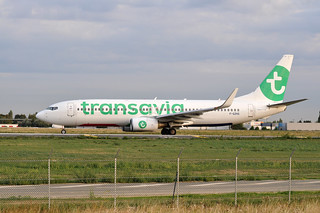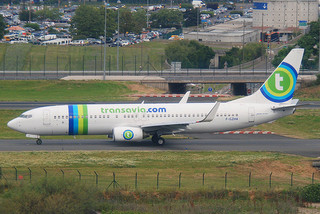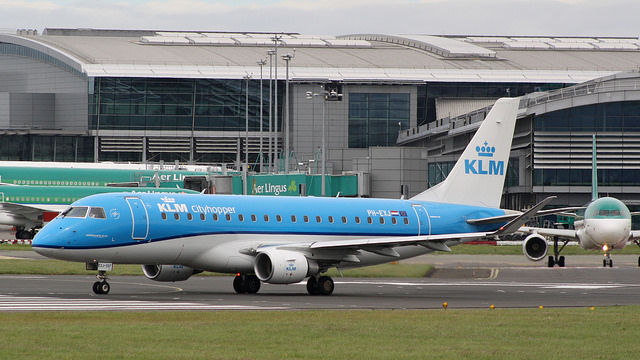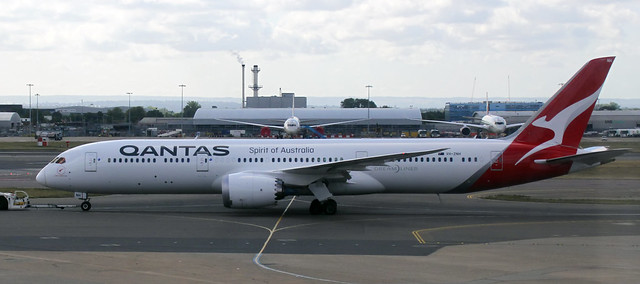Transavia France B738 on Feb 13th 2019, turbulence injures 10
Last Update: February 21, 2020 / 16:19:15 GMT/Zulu time
Incident Facts
Date of incident
Feb 13, 2019
Classification
Accident
Cause
Turbulence
Airline
Transavia France
Flight number
TO-4898
Departure
Lyon, France
Destination
Tel Aviv, Israel
Aircraft Registration
F-GZHM
Aircraft Type
Boeing 737-800
ICAO Type Designator
B738
The occurrence aircraft remained on the ground for 3.5 hours, then departed for the return flight.
On Feb 28th 2019 the BEA reported the aircraft encountered severe turbulence enroute at FL370 and continued to destination. There were minor injuries, the aircraft received minor damage. The BEA is investigating the occurrence.
On Jan 20th 2020 the BEA released their final report in French only (Editorial note: to serve the purpose of global prevention of the repeat of causes leading to an occurrence an additional timely release of all occurrence reports in the only world spanning aviation language English would be necessary, a French only release does not achieve this purpose as set by ICAO annex 13 and just forces many aviators to waste much more time and effort each in trying to understand the circumstances leading to the occurrence. Aviators operating internationally are required to read/speak English besides their local language, investigators need to be able to read/write/speak English to communicate with their counterparts all around the globe).
On Feb 21st 2020 the BEA also released their English version of the report (editorial note: the following summary is based on the French report in translation by AVH).
The report releases following conclusions and lessons learned:
The aircraft entered clear air turbulence while passengers and cabin crew were not seated with seat belt fastened. The accelerations caused by the turbulence threw some passengers and cabin crew against the ceiling, a number of passengers and crew received injuries.
Air Traffic Control had advised the flight crew, that a preceding aircraft reported severe turbulence between FL380 and FL400. The flight crew considered that information and forwarded it to cabin crew. The fasten seat belt sign was illuminated less than a minute later. Cabin crew began checking that the passengers had their seat belts closed when the turbulence set in. Some of the passengers, even though informed by cabin crew, were still not seated with seat belts fastened and were injured. The flight attendants in the aft area also did not have time to get seated and fastened and were injured, too.
In the morning of the flight the flight crew had fetched the weather reports about 4 hours prior to departure but did not receive any update of the weather update subsequently. The weather forecast valid at that time did not predict turbulence. However, the next forecast, still released before departure but not included in the flight dossier, predicted severe turbulence along the flight path.
The absence of SIGMET updates in real time prevents the flight crew to get informed about severe turbulence in their area. The crew therefore had no knowledge of the forecast and observed turbulence and thus did not illuminate the fasten seat belt signs in time.
In the event of an unexpected turbulence the procedures require the cockpit to announce: "this is the flight deck, turbulence, cabin crew be seated". The flight crew was focussing on controlling the aircraft. The resulting delay between information relayed by ATC and information to cabin crew prevented cabin crew to carry out all checks of the cabin and clean up the cabin. The occurrence of light to medium turbulence is usual, it was not possible for the cabin crew to know about the severity of the upcoming turbulence and thus assess the urgency of being seated with seat belts fastened.
These findings highlight the intrinsic limitation of procedures for unexpected turbulence: unpredictability, both in time and intensity of turbulence, does not permit to delay procedures or apply them "wisely".
Forecasting turbulence by meteorological services can only provide probabilities, clear ait turbulence detection is currently not possible with on board systems. This event and the increase of clear air turbulence events, in particular over the North Atlantic, due to climate change highlight the necessity for improved clear air turbulence detetion and prediction. The development of onboard systems capable of detecting clear air turbulence as well as transmission of up-to-date weather information to the flight deck are two levers of safety improvements addressing this need.
The BEA added they have investigated 74 accidents related to turbulence encounters resulting in 107 serious injuries since the year 2000. In 1996 and 1997 the BEA investigated two turbulence encounters in which a passenger each succumbed to the injuries received in turbulence, both passengers were not seated with seat belts fastened.
The BEA reported the flight crew, after receiving the ATC advisory about the turbulence observed ahead, informed cabin crew to expect turbulence in about 2-3 minutes. The purser left the flight deck and walked to the aft galley to inform the collegues there, arriving at the aft galley the fasten seat belt signs get illuminated. The purser makes an according announcement to the passengers, the flight attendants begin to check the seat belts of the passengers. The first officer, pilot flying, in the meantime reduced the speed from 0.79 to 0.77 mach in anticipation of the turbulence, the aircraft was enroute at FL370. Moderate turbulence started lasting for about 10 seconds, during this time the tail wind changed from 35 knots to 11 knots, the cross wind component changed from 77 to 50 knots. The vertical load varied between 0.52 and 1.7G. The speed increases sharply, the overspeed alarm activates, the first officer deployed the speed brakes, the turbulence intensifies reaching -0.7G and +1.71G, the aircraft rolled to a left bank angle of 37 degrees at 38 degrees/second at the same time. The captain assumes control of the aircraft to level the wings, the autopilot control wheel steering mode activates. The captain instructs the first officer to inform ATC while the captain began a descent to FL350. ATC initially refused the descent but then cleared the descent to FL350 after the first officer advised they were descending out of severe turbulence. Following the turbulence encounter cabin crew asked for doctors on board.
Incident Facts
Date of incident
Feb 13, 2019
Classification
Accident
Cause
Turbulence
Airline
Transavia France
Flight number
TO-4898
Departure
Lyon, France
Destination
Tel Aviv, Israel
Aircraft Registration
F-GZHM
Aircraft Type
Boeing 737-800
ICAO Type Designator
B738
This article is published under license from Avherald.com. © of text by Avherald.com.
Article source
You can read 2 more free articles without a subscription.
Subscribe now and continue reading without any limits!
Read unlimited articles and receive our daily update briefing. Gain better insights into what is happening in commercial aviation safety.
Send tip
Support AeroInside by sending a small tip amount.
Related articles
Transavia France B738 at Prague on Sep 20th 2023, could not pressurize cabin
A Transavia France Boeing 737-800, registration F-HTVN performing flight TO-103 from Prague (Czech Republic) to Paris Orly (France), was climbing out…
Transavia France B738 at Djerba on Dec 8th 2022, flaps problem
A Transavia France Boeing 737-800, registration F-GZHS performing flight TO-8392 from Paris Orly (France) to Djerba (Tunisia), was on approach to…
Transavia France B738 at Paris on Dec 4th 2022, flaps problem
A Transavia France Boeing 737-800, registration F-GZHS performing flight TO-7267 from Algiers (Algeria) to Paris Orly (France), was on approach to…
Transavia France B738 at Nantes on Oct 1st 2022, both nose tyres damaged on landing
A Transavia France Boeing 737-800, registration F-GZHA performing flight TO-3943 from Djerba (Tunisia) to Nantes (France) with 160 people on board,…
Transavia B738 at Paris on Aug 11th 2022, yaw damper failure
A Transavia France Boeing 737-800, registration F-GZHA performing flight TO-7280 from Paris Orly (France) to Oran (Algeria), was climbing out of…
Newest articles
KLM Cityhopper E175 near Amsterdam on Apr 15th 2024, lightning strike
A KLM Cityhopper Embraer ERJ-175, registration PH-EXJ performing flight KL-1057 from Amsterdam (Netherlands) to Norwich,EN (UK), was climbing out of…
Qantas B789 over Pacific on Apr 14th 2024, electrical problem
A Qantas Boeing 787-9, registration VH-ZNH performing flight QF-76 (dep Apr 13th) from Vancouver,CA (Canada) to Sydney,NS (Australia), was enroute at…
Subscribe today
Are you researching aviation incidents? Get access to AeroInside Insights, unlimited read access and receive the daily newsletter.
Pick your plan and subscribePartner

A new way to document and demonstrate airworthiness compliance and aircraft value. Find out more.

ELITE Simulation Solutions is a leading global provider of Flight Simulation Training Devices, IFR training software as well as flight controls and related services. Find out more.

Your regulation partner, specialists in aviation safety and compliance; providing training, auditing, and consultancy services. Find out more.
AeroInside Blog
Popular aircraft
Airbus A320Boeing 737-800
Boeing 737-800 MAX
Popular airlines
American AirlinesUnited
Delta
Air Canada
Lufthansa
British Airways





